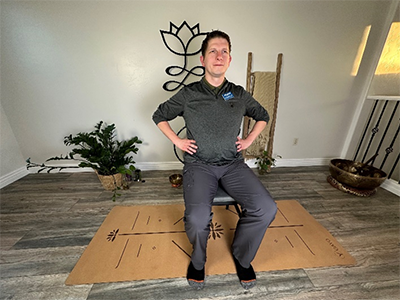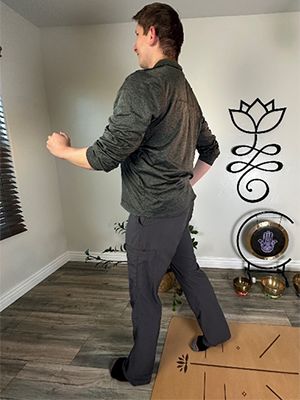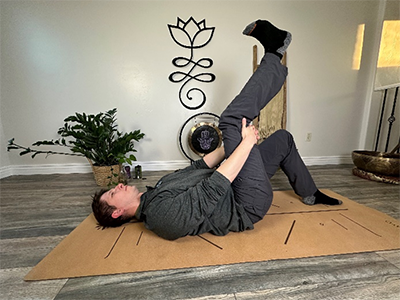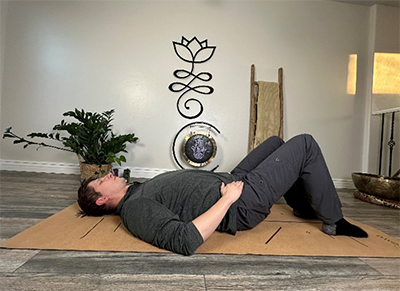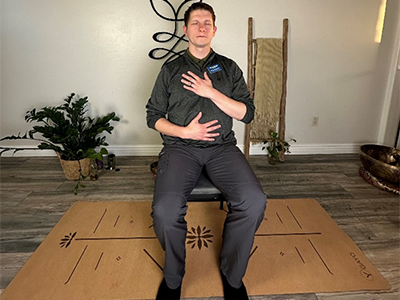Listed below are exercises that have been shown to help reduce pain and that can be done daily!
Focus on Breath Work
Did you know that breathing poorly can be linked with muscle pain, chest pain, neck pain, back pain, headaches, and more? When we breathe at chest level and not in our stomach, and when we breathe through the mouth and not through the nose, we develop poor breathing patterns.
By breathing this way, we over activate the accessory muscles in our chest and ribs, decrease our spine stability, increase the sensitivity of the nerves, and more. These factors can lead to an increase in pain. Try these steps to improve breathing:
- Breathe in and out through your nose (If you have difficulty breathing through your nose both on the inhale and exhale, try to breathe in through your nose and out through your mouth with a longer exhale).
- Breathe in your stomach and not up in your chest. A good cue to use when breathing in your stomach is to place your hands below and on the outside of your ribs to feel a natural rise and fall (If your shoulders limit you, place your hands gently on your stomach to feel a natural rise and fall).
- To start practicing, you can breathe this way for five to ten minutes daily.
Try Walking Backwards
Backwards walking has been shown to decrease pain for those with knee osteoarthritis and athletes/non-athletes with low back pain.
For this exercise, you will want to be in an area where you can walk safely and be able to grab onto a solid surface (you could also use some walking sticks for support).
- To prepare for this exercise, warm up with two to five minutes of regular walking.
- Then, practice backwards walking to ensure you can do this exercise safely.
- After practicing, walk backwards for two to five minutes and work your way up to five to ten minutes.
Give Nerve Glides a Try
Some of that pain you may be feeling is shooting down your legs or into your hands. Many factors can cause this, but one factor is that nerves are irritated or compressed by the surrounding tissues in your body. Nerve glides have been shown to help improve the movement around the nerves, which helps reduce the pain and decreases the sensitivity of the nerves. A way to help smooth the tissue along your back would be to:
- Lay on your back, placing both feet on the floor with both knees bent.
- Grab one leg and bring it towards your chest. You may grab under that knee with both of your hands.
- Bring the leg that is close to your chest and extend that leg towards the ceiling.
- Once the leg is up towards the ceiling, point your toes and flex your foot towards you.
- Return your leg to the starting position.
- Repeat this movement 10-15 times on both sides (perform one side at a time).
Lay On Your Back
How we move throughout the day, our emotional state, and the amount of time we sit all effect how our hips and pelvis move. This can lead to misuse and/or overuse of our muscles. A way to allow those overused muscles in our pelvis and hips to release is by giving them time to relax. This is how you do it:
- Start by lying on your back (You can use a yoga mat on the floor or your bed.)
- Place your knees at a 45-degree angle with the feet flat on the mat, or at a 90-degree angle supported on a chair.
- Place your hands on your chest or the front of your hips.
- Rest in this position for five plus minutes.
- Rest on one side for one to three minutes before getting up.
Practice Meditation
Did you know our emotions, thoughts, and behaviors can influence how we manage and experience pain? Did you also know that the more we try to control our thoughts and inner feelings, the more we also increase our pain? One way to help with this is to meditate and to allow the thoughts, pain, and more to come into our minds and to let them go. This may come as a surprise but try to see if you notice a difference in your pain. Try this breathing meditation right now.
- Focus on your breathing and become aware of your breath.
- Breathe in and out through your nose (if you can’t breathe out through your nose, it is ok to breathe out through your mouth).
- As you breathe in through your nose, internally in your head, say “breathing in.”
- As you breathe out through your nose or mouth, internally in your head, say “breathing out.”
- You can repeat this process for two to five minutes.
We have covered different exercises and movements you can do at home to help you with your pain. These exercises can be done at any time that works best with your schedule and can be completed each day if you feel a benefit from them. You may have to reduce the amount of time spent on the exercises or even reduce the number of reps. That is ok! The more you work on these exercises to help you feel better with your pain, the more it will lead you to return to the activities you once enjoyed.
If you are looking for a place to help you with your pain and to help you return to the activities you once enjoyed, come to Athletico! One of our licensed physical therapists will assess your current condition and provide their expert recommendations for the best treatment plan for your needs.
*Per federal guidelines, beneficiaries of plans such as Medicare, Medicaid, Tricare, VHA and other federally funded plans are not eligible for free assessments.
The Athletico blog is an educational resource written by Athletico employees. Athletico bloggers are licensed professionals who abide by the code of ethics outlined by their respective professional associations. The content published in blog posts represents the opinion of the individual author based on their expertise and experience. The content provided in this blog is for informational purposes only, does not constitute medical advice and should not be relied on for making personal health decisions.
References:
1. Chen, Zehua, et al. “The efficacy of backward walking on static stability, proprioception, pain, and physical function of patients with knee osteoarthritis: A randomized controlled trial.” Evidence-Based Complementary and Alternative Medicine, vol. 2021, 11 June 2021, pp. 1–9, https://doi.org/10.1155/2021/5574966.
2. Dufek, Janet et al. “Backward walking: A possible active exercise for low back pain reduction and enhanced function in athletes.” Journal of Exercise Physiology Online, vol.14, no. 2, 2021, pp. 17-26.
3. Koch, Liz. The Psoas Book. Guinea Pig Publications, 2012
4. Lin, Long-Huei, et al. “Neural mobilization for reducing pain and disability in patients with lumbar Radiculopathy: A systematic review and meta-analysis.” Life, vol. 13, no. 12, 26 Nov. 2023, p. 2255, https://doi.org/10.3390/life13122255.
5. Tatta, Joe. Radical Relief: A Guide to Overcome Chronic Pain. OPTP, 2020.
6. McKeown, Patrick, and Laird Hamilton. The Breathing Cure Develop New Habits for a Healthier, Happier, and Longer Life with a Foreword by Laird Hamilton. Humanix Books, 2021.
7. Raza, Tahreem, et al. “Investigating the effects of retro walking on pain, physical function, and flexibility in chronic non-specific low back pain.” Iranian Rehabilitation Journal, vol. 21, no. 2, 1 June 2023, pp. 309–318, https://doi.org/10.32598/irj.21.2.1880.1.
8. Robbins, Anthony, et al. Life Force: How New Breakthroughs in Precision Medicine Can Transform the Quality of Your Life & Those You Love. Simon & Schuster, 2022.

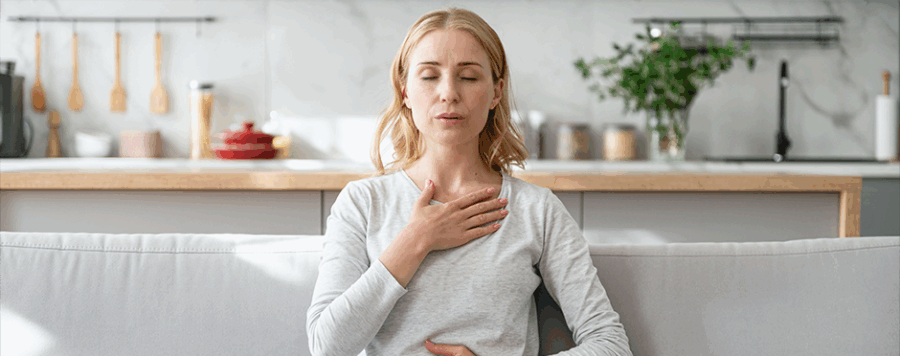 width="900"
height="356"
>
width="900"
height="356"
>
